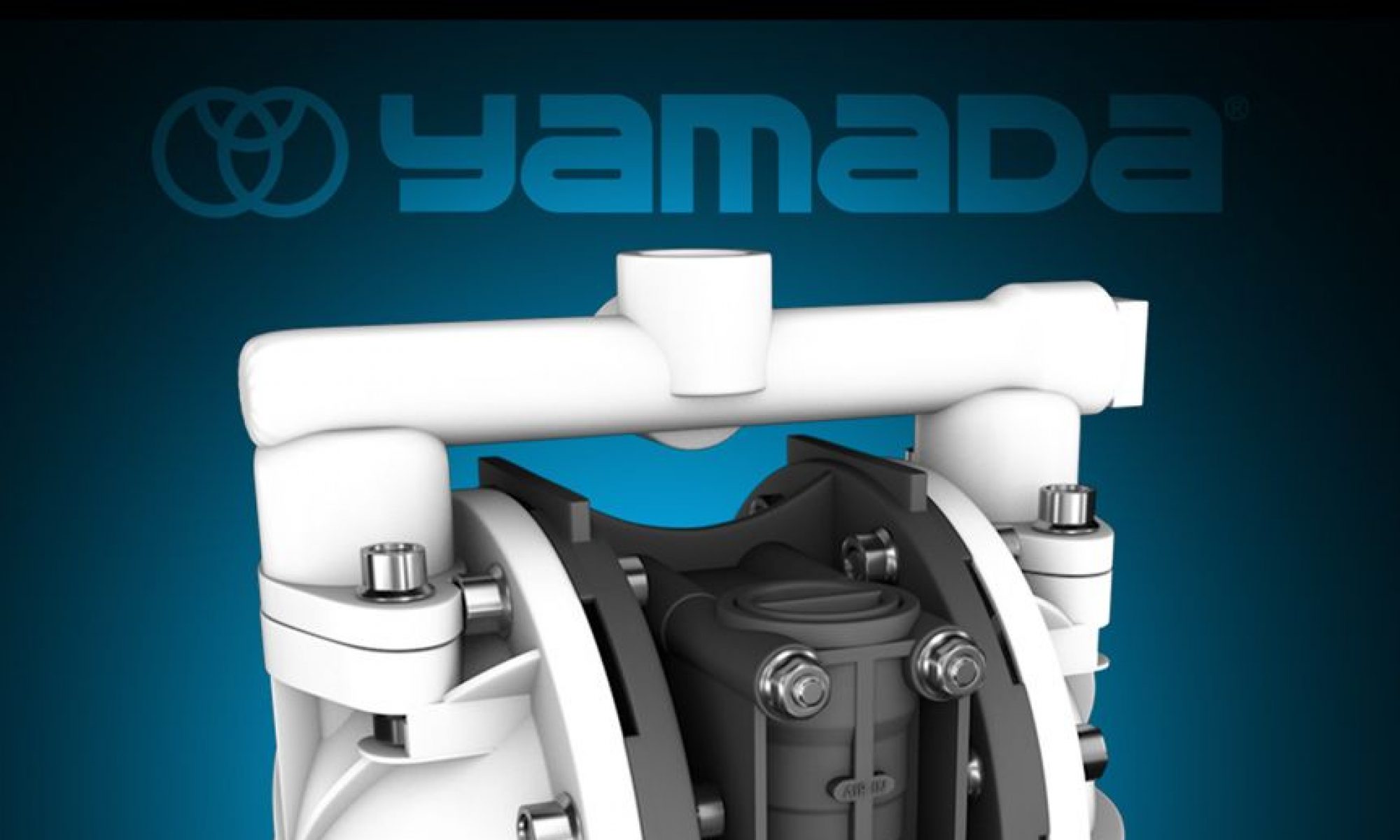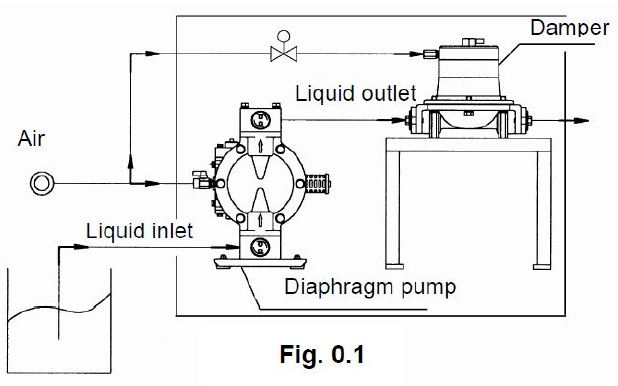Yamada makes an automatic pulsation dampener, known as the AD Series Dampener. The AD Series Dampener is self adjusting and runs off the same regulated air supply that powers the pump.
In most situations, the dampener does not need an air regulator of its own. However, there may be times when a separate air regulator for the pulsation dampener is helpful.
An example of this would be using an NDP-40BAN with an AD-40AN pulsation dampener. When running at 90 GPM at 50’ TDH (22 PSI) the air requirements are 100 PSI air pressure and 100 SCFM air volume.
Running at that point on the performance curve generates a difference between the air pressure and the discharge pressure of 78 PSI. With the differential pressure being that high the dampener will consume more than the normal amount of air.
The solution to the pulsation dampeners high air consumption is to install an air regulator in the dampener air line (see Fig. 0.1). We recommend setting the dampener air pressure 10% above the discharge pressure. So with a discharge pressure of 22 PSI, adjust the dampener air pressure to 24 PSI.


